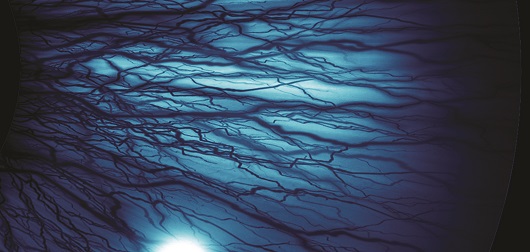Age-related macular degeneration (AMD) is a progressive eye condition that affects millions of people worldwide and poses a significant threat to vision in individuals over the age of 50.1 Of the two types of AMD, wet AMD, which is characterized by the growth of a choroidal neovascular membrane, is responsible for approximately 90% of the vision loss observed in patients with AMD.1 Traditionally, treatments for wet AMD have primarily centred around the inhibition of vascular endothelial growth factor (VEGF), which is responsible for promoting neovascularization. Bevacizumab, a monoclonal antibody targeting vascular endothelial growth factor (VEGF), has already demonstrated its efficacy in treating various forms of cancer by hindering angiogenesis.2 It also has been used for treating wet AMD for over a decade, albeit as an off-label treatment.3 Bevacizumab-vikg, an innovation of bevacizumab formulated specifically for ophthalmic use, signals a new chapter in the fight against wet AMD.
Bevacizumab-vikg (ONS-5010/LYTENAVA™; Outlook Therapeutics, Inc., Cranbury, NJ, USA) has undergone clinical trials to demonstrate its safety and efficacy in wet-AMD treatment. Outlook Therapeutics has filed a Biologics License Application with the US Food and Drug Administration, and if approved, it will be the first and only approved bevacizumab for ophthalmic indications. Of the clinical trials conducted, NORSE ONE was a proof-of-concept clinical experience trial (N=61) conducted at nine trial sites in Australia. It compared bevacizumab-vikg to ranibizumab (LUCENTIS®; Genentech, South San Francisco, CA, USA) in the treatment of wet AMD and showed the first evidence of the efficacy and safety of this treatment in humans.4 NORSE TWO, the pivotal phase III registration clinical trial, enrolled a total of 228 patients with wet AMD at 39 clinical trial sites in the United States.5 It was designed as a superiority trial. The bevacizumab-vikg was administered monthly against ranibizumab, which was administered according to the PIER (Phase IIIb, multicenter, randomized, double-masked, sham Injection–controlled study of the Efficacy and safety of Ranibizumab) dosing regimen6 described in the ranibizumab label, that is, three monthly doses followed by quarterly doses. In this trial, both the primary and secondary endpoints were achieved with high statistical significance and clinical relevance. The primary endpoint, a gain of ≥15 letters of vision, was seen in 41.7% of patients in the bevacizumab-vikg group versus 23.0% of those in the ranibizumab group (p=0.0052). Further, 56.5% of patients in the bevacizumab-vikg group gained ≥10 letters of vision (p=0.0016), and 68.5% gained ≥5 letters of vision (p=0.0116). The key secondary endpoint was a mean change in best-corrected visual acuity from baseline to month 11. In the bevacizumab-vikg arm, there was a gain of 11.2 letters compared with 5.8 letters in the ranibizumab arm (p=0.0043).5 NORSE THREE was an open-label safety study required for the Biologics License Application submission of bevacizumab-vikg (N=197). Overall, the drug was well tolerated and showed a strong safety profile, with only one adverse event of ocular inflammation reported across all three trials.7
However, the design of the NORSE TWO trial received some criticism on account of the infrequent dosing of the comparator ranibizumab. In the CATT trial (ClinicalTrials.gov identifier: NCT00593450), a monthly administration of bevacizumab was shown to be equivalent to a monthly administration of ranibizumab.8 Quarterly dosing of ranibizumab is shown to be inferior to monthly dosing of ranibizumab. Consequently, experts felt that comparing 12 monthly doses of bevacizumab-vikg to 5 monthly doses of ranibizumab was not fair. The company defended their stand by saying that the dosing followed was the one recommended on the label for ranibizumab. However, a large amount of data had already established the efficacy of bevacizumab.9
What makes bevacizumab-vikg attractive is that it will be dispensed as a single vial, which will completely eliminate the problems associated with fractionation and repackaging. In the past, several episodes of endophthalmitis were traced back to the compounding pharmacies.10,11 Furthermore, bevacizumab has problems with inconsistent dosing and bioavailability. Small droplets of silicone oil have also been reported inside the vitreous, and these have been observed to arise from the syringes used to prepare the aliquots of bevacizumab.10 Moreover, several practitioners are uncomfortable with using an off-label product, as it can cause many issues, ranging from legal and ethical issues to lack of reimbursement and increased risk of adverse events. Thus, bevacizumab-vikg has the potential to enhance the therapeutic outcomes and convenience of treatment.
The main advantage of the off-label bevacizumab lies in the reduced treatment cost. The cost of compounded bevacizumab is between US$25 and US$50.12 It might not be practical for Outlook Therapeutics to set such a low price. The speculated price for bevacizumab-vikg ranges anywhere from US$100$ to US$1,000 or more.13 With the market becoming overcrowded with several new biosimilars and innovator molecules, the competition is fierce. However, if priced reasonably lower than the approved molecules and their biosimilars, bevacizumab-vikg would be a welcome new drug, especially in countries where off-label drugs are not permitted.12,13
However, experts are concerned that the availability of on-label bevacizumab-vikg is likely to paradoxically increase the costs to the healthcare systems and patients.14 With the approval of bevacizumab-vikg by the US Food and Drug Administration, the compounding of the off-label bevacizumab will have to be stopped under the Drug Quality and Security Act, which stipulates that voluntary facilities cannot compound a copy of approved drugs. Compounded bevacizumab will be considered a copy of the approved on-label bevacizumab-vikg. Significant speculation exists around this law, but regardless of the regulations, the availability of compounded bevacizumab might be affected. After calculating the average sales prices of anti-VEGFs in the United States, it was determined that the best way to continue to offer affordable medical care to patients would be to grant an exemption to this law on the use of repackaged intraocular bevacizumab.14
In conclusion, bevacizumab-vikg is a promising new formulation for on-label ophthalmic use to treat wet AMD. If approved, it would offer a more convenient treatment option, as a single dose vial would eliminate the problems inherent to fractionation and compounding. If priced right, it has the potential to impact the way we treat wet AMD.







